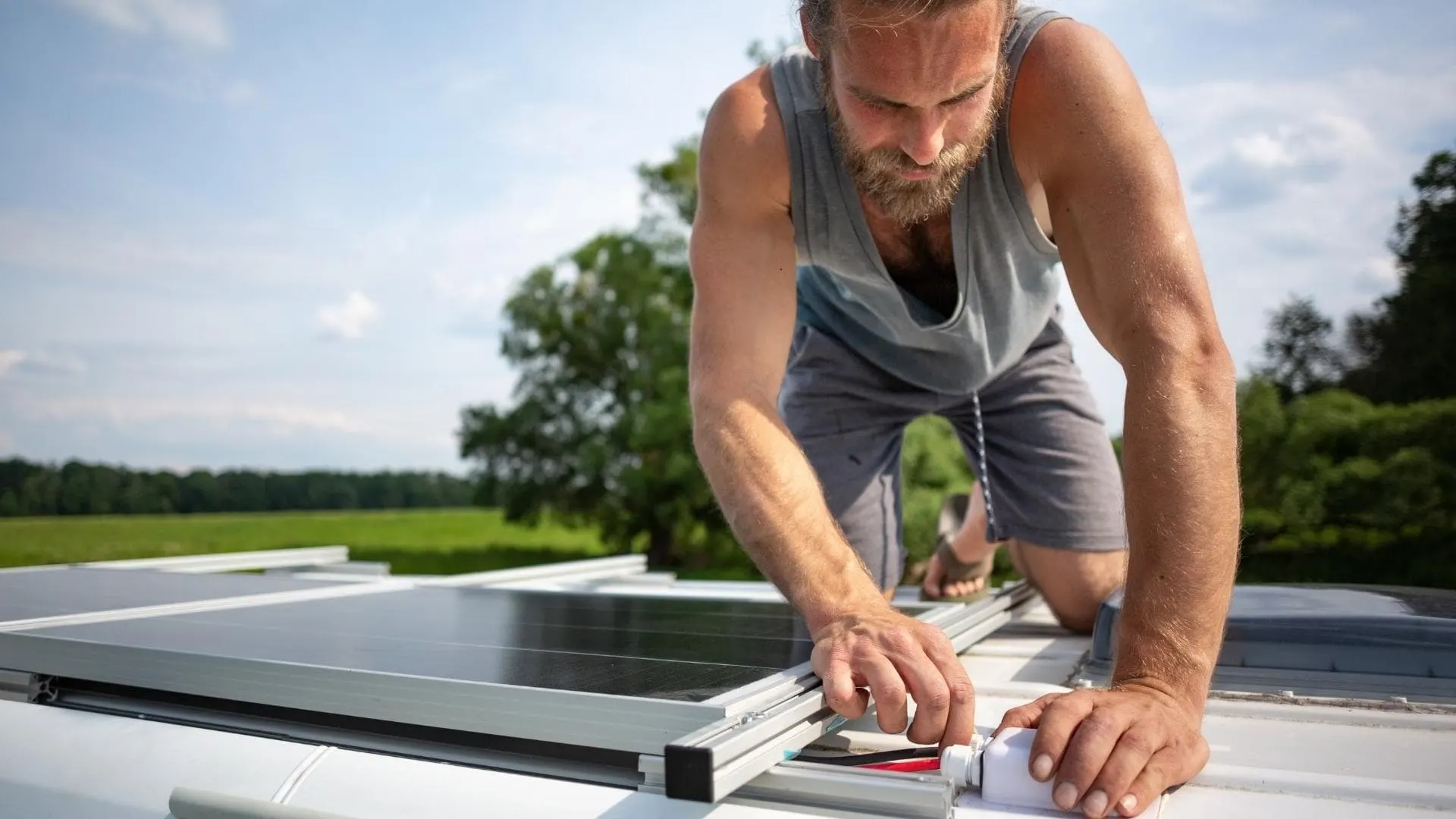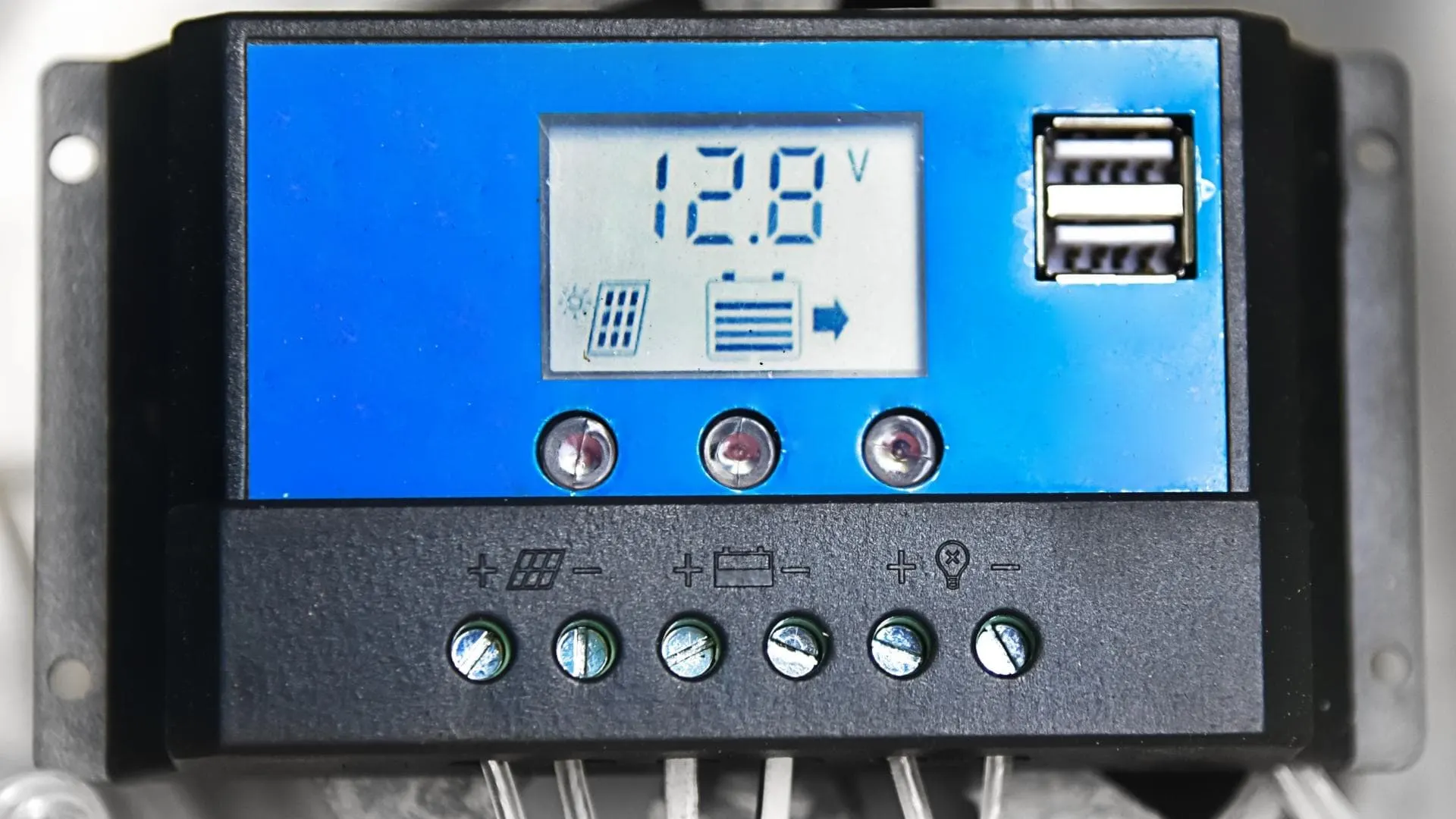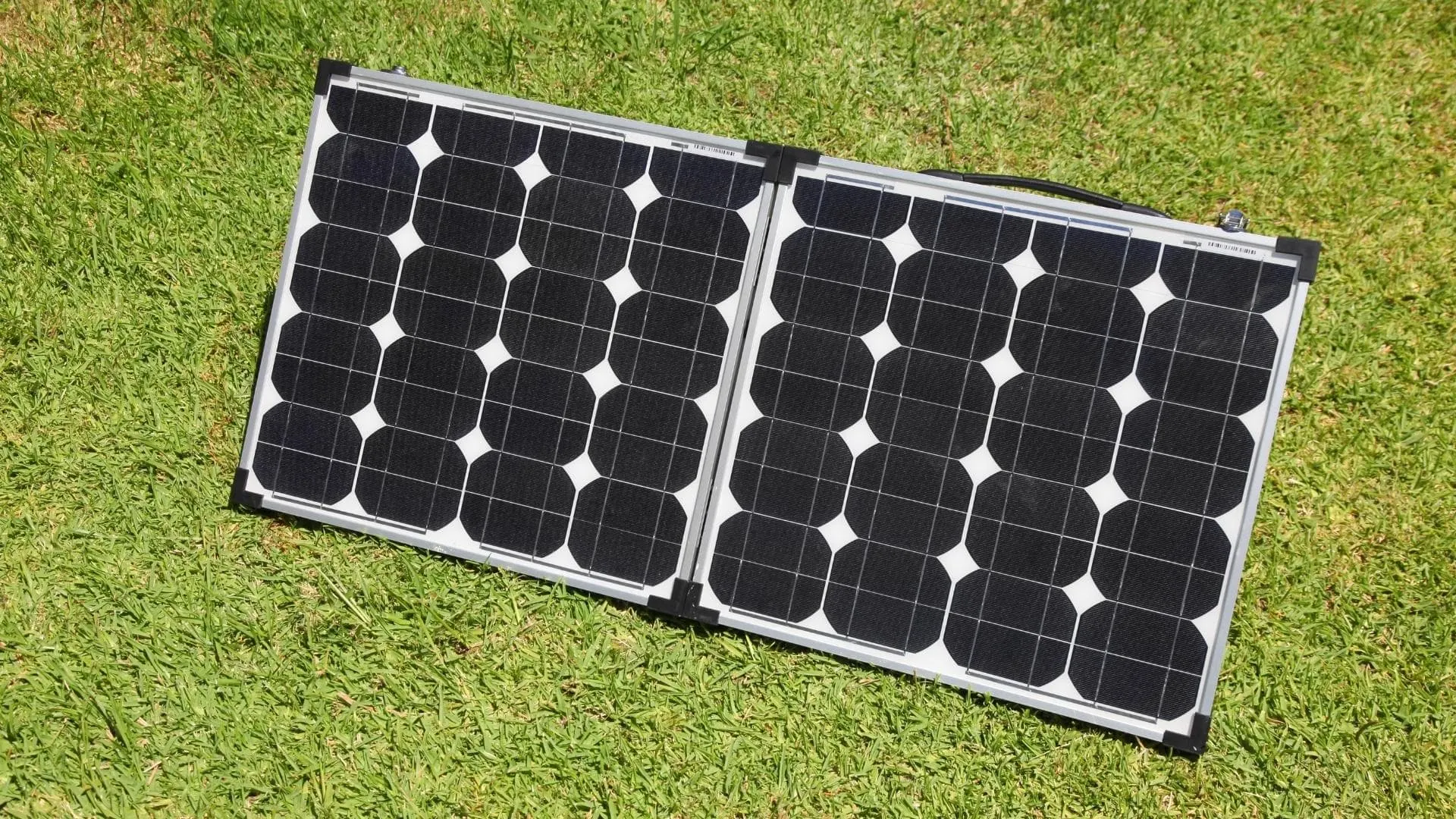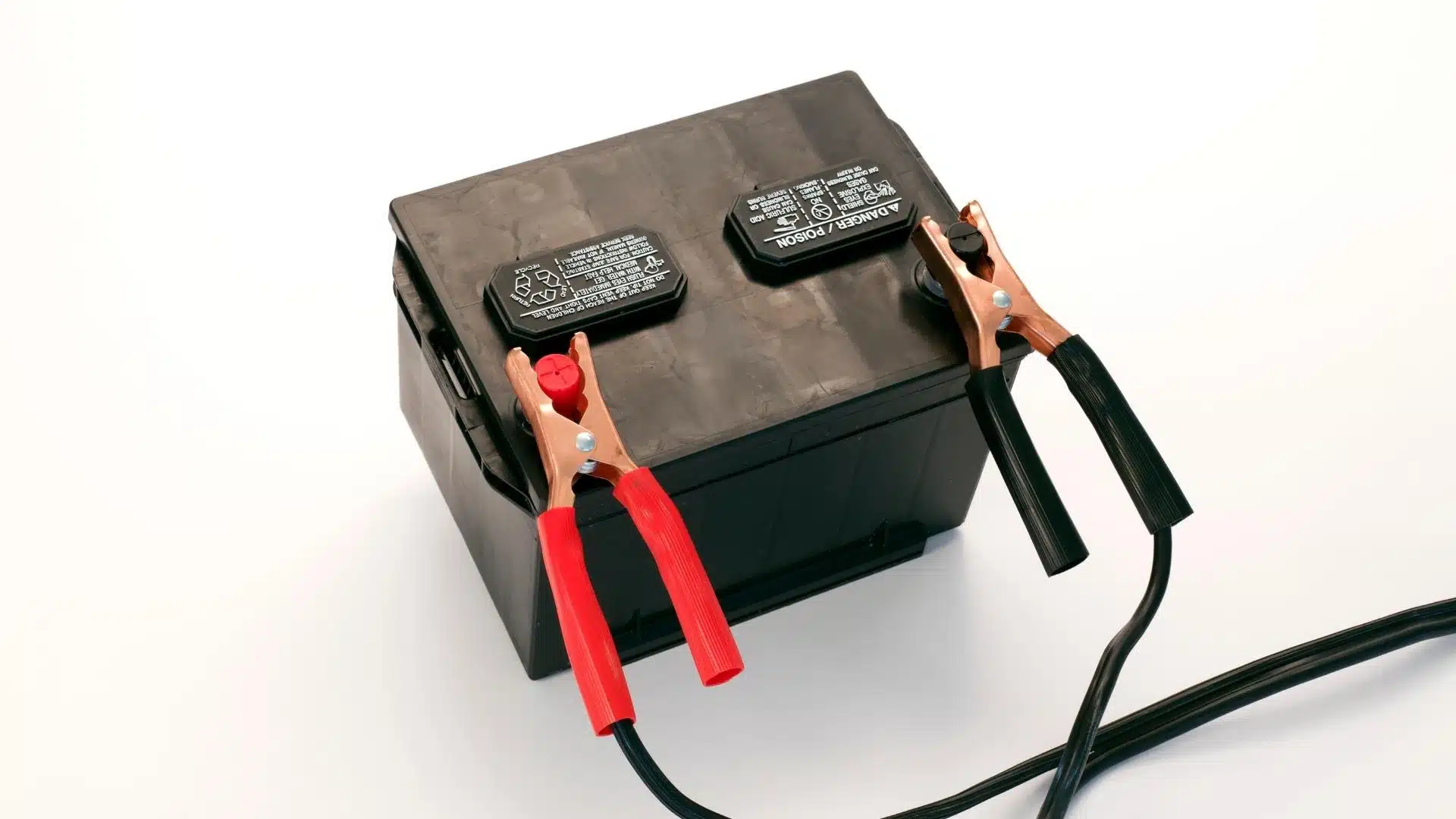More and more RVers have turned to solar to fulfill (or partially fulfill) their electrical power needs. And the boom in solar hasn’t gone unnoticed by RV manufacturers. That’s why we’re seeing more and more RVs enter the market billed as “solar ready”. But, just what is a “solar-ready RV”? Does it come with solar panels all hooked up to a great charge controller, and a robust battery bank to store the awesome power of the sun?
Well, hold on to your hat, because we’re about to find out!
- 1) What Is a Solar Ready RV?
- 2) Do RV Manufacturers Make the Ports on a Solar Ready RV?
- 3) Do You Have to Buy Your Solar Equipment From the Company that Made Your RV Solar Ready?
- 4) Can I Install My Own Choice of Solar Panels on My Solar Ready RV?
- 5) What Is Polarity?
- 6) Can I Switch the Polarity On My Pre-Installed Plug to Use My Own Solar Panels?
- 7) So, What Does “Solar Ready RV” REALLY Mean?
What Is a Solar Ready RV?
The term “solar ready” or “solar prep” is a marketing term more than anything else. While you might think it means that the RV is all ready to bring solar power to your RVing experience, it actually only means that the RV is wired for solar power.
Generally speaking, “solar ready” doesn’t mean the rig has solar panels, a solar charge controller, and/or a sufficient battery bank installed. Instead, what it usually means is that the RV comes with a solar connection port (either on the roof cap or a wall-mounted port on one side of the rig).

The term “Solar Ready RV” usually means is that the RV comes with a solar connection port (either on the roof as shown here or wall-mounted on one side of the rig). Solar panels are usually not included, but the buyer is “strongly encouraged” (intimidated) to buy the solar equipment from the company that supplied the port.
Mainly, it’s a sales feature, and manufacturers of solar equipment are in on the deal.
When you see the term “solar ready”, you can be relatively certain that a company that manufactures solar panels has paid the RV manufacturer to install their proprietary solar panel plug during the RV manufacturing process.
Most solar-ready RVs don’t come with actual solar components, though they do often come with an intimidating sticker warning you to use a specific brand of solar panels and ONLY those solar panels. So the idea is that you’ll buy the RV and then when you’re ready to upgrade it to add solar, you’ll contact the solar panel company as noted on the sticker and buy their panels to REALLY make your new RV ready for solar power.
From what we’ve read, it appears that RV manufacturers can choose how the RVs they sell are pre-wired for solar. So, as a buyer, you’ll want to do your research in an effort to understand how the rigs you’re considering buying are wired by the RV manufacturers.
Some RV manufacturers are responsibly concerned about the quality of the solar wiring going into their RVs. Some even install the equipment to such a standard that they’re really plug-and-play (with compatible solar panels) for the consumer.
Others, however, simply want to be able to add the term “solar ready” to their marketing campaign for the RV.
Knowing which RV manufacturers are taking the term “solar ready” seriously, can be important. Some include full wiring while others install only wiring from the roof port or wall-mounted port to the battery bank, and that’s it. And the gauge (thickness) of the wiring used is important, too. Wires that are too thin will limit the amount of solar you can install and could reduce the effectiveness of their output by introducing higher power loss across their length.
RVs with full wiring usually include higher-gauge wiring and many also include a solar charge controller, which is an important part of the RV’s solar system.

A solar charge controller is a critical piece of a solar system. An RV is not truly “solar ready” without this important component, among others.
The charge controller, you may recall from our post on RV solar charge controllers, is an integral (and critical) part of the RV solar system, allowing you to harness the energy coming through your solar panels to its fullest potential for charging your battery(ies).
“Solar ready” could mean that all of this is included, but you’d want solid proof of that rather than simply relying on the term “solar ready” on its own. Far too often, a solar-ready RV is anything but truly ready for solar.
Do RV Manufacturers Make the Ports on a Solar Ready RV?
A solar-ready sticker on an RV may mean that a solar tech company has partnered with the RV manufacturer, and paid them to install their plug (and only their plug) in their RVs.
The reason a solar tech company is willing to pay an RV manufacturer for this privilege is related to that warning on the sticker that we mentioned earlier. The wording of the message cautions the buyer of the RV to only use their proprietary “solar ready” plug/port with their solar panels. And many buyers do just that, which is why it’s worth the investment to solar companies to pay an RV manufacturer for that solar-ready partnership.
Do You Have to Buy Your Solar Equipment From the Company that Made Your RV Solar Ready?
As much as the warning sticker might tend to make you believe that you’re locked into using solar panels from the company that installed the ports, that’s not the case.
There are many solar panels that are likely to work well with the port on your new RV, with or without a bit of adjustment.
You may also opt to use portable solar panels. Or you can choose to bypass the originally-installed port altogether, and start from scratch using any solar equipment you want.

You can install your own choice of rigid or flexible solar panels on a solar-ready RV, or you can opt to use portable solar panels.
Some companies use a different polarity on the pre-installed plugs that make it difficult to use any other panels but their own. But there are ways around this as well! (More on that shortly!)
Can I Install My Own Choice of Solar Panels on My Solar Ready RV?
You absolutely can. However, you may not be able to simply plug them in and go about your business. You’ll need to be sure that your panels are wired into the system correctly, and that your mounting points are solid and capable of holding the panels.
You’ll also need to properly seal any holes you drill into your RV’s roof to prevent RV roof leaks which can be incredibly damaging to your RV. Be sure to use the appropriate RV caulk for this job. You want to avoid RV water damage at all costs.
You may want to look into flexible solar panels vs rigid to get a sense of which panels would be best for your RV. If you’re not too familiar with flexible solar panels for RVs, our post discusses the pros, cons, and the best ones to buy.
We use a combination of both flexible and rigid panels in our ultimate RV solar panel system.
Here’s John to explain how we arrived at this choice for our 1,300W RV solar system:
There are some important concepts to understand relative to the process of installing solar panels on your solar-ready RV. Among these is the term “polarity”. The reason this is important to know is that reverse polarity (or opposite polarity) can permanently damage your solar equipment.
The best solar products already include polarity protection, but understanding the concept is still important – so let’s take a brief look at what polarity means.
What Is Polarity?
Polarity refers to the direction of the flow of electrical current, in this case from your solar panel(s) to your RV’s battery(ies).
You may know that all batteries have a positive and a negative terminal. If you’ve ever jump-started a car, you know that you need to pay close attention to the difference between the two as you connect the jumper cables.
The positive terminal of the battery is connected to a red wire, and the negative terminal is connected to a black wire (though, in some cases, the negative wire may be white).

Connecting the red (positive) to the positive terminal and the black (negative) to the negative terminal of this battery maintains polarity. Solar panels work in this way as well. The red (positive) lead on the solar panel runs to the positive terminal on the battery and the black (negative) lead runs to the negative terminal on the battery.
Solar panels work similarly. The way you maintain polarity is by connecting the red (positive) lead from the solar panel to the positive terminal on the battery, and the black (negative) lead on the panel to the negative terminal on the battery. As long as you maintain polarity, the system should work as intended.
However, if you were to connect the leads from the solar panels to the wrong terminals on the battery (red to negative and black to positive), not only would the system not work, but it could also damage your equipment, in some cases permanently. Some solar equipment has polarity protection which may prevent the equipment from being damaged, but the system won’t work unless the correct polarity is maintained.
So – when you wire your solar panels to your RV’s electrical system, you’ll want to be sure that the positive lead coming from your solar panels is wired to the positive terminal on your solar charge controller, and the negative solar panel lead is wired to the negative terminal.
As we noted at the beginning of the post, some solar-ready rigs have standard-looking plugs installed that have the polarity reversed. This indicates that the solar company is attempting to force the buyer of the RV to use their solar equipment. However, there are ways around this!
Can I Switch the Polarity On My Pre-Installed Plug to Use My Own Solar Panels?
You can!
Let’s say that the solar panel port that came with your new RV is the SAE-style port, but it’s wired so that the polarity is reversed, making it so that it will only work with certain panels. You can switch the polarity to work with your choice of solar panels in a couple of ways.
The simplest option would be to purchase a solar polarity reversing adapter:
- The outlet polarity of different brand solar panel chargers maybe different. And the polarity may be reversed when the solar panels connect with the...
- These SAE plugs would be make it very easy to convert the reversed polarity.
The other option is to re-wire the port itself, using just a few tools.
- Voltmeter to identify which side of the plug is positive and which is negative
- Wirecutter/stripper/crimper
- Crimp connectors for the appropriate gauge wire
Once you’ve used your voltmeter to confirm which side of the plug is positive and which is negative, you’ll use your wire cutter to cut both sets of wires behind the plug (not too close to the plug, though… you want to leave enough wire extending from the plug so you can strip it and re-attach).
Then, using the crimp connectors, you’ll reverse the wires connecting to the pigtail you left extending from each side of the port. For example, connect the red wire to the black, and the black wire to the red, effectively switching the polarity. Crimp them tightly using your wire crimper.
Finally, use your voltmeter to confirm that you’ve switched the polarity so that the positive lead is on the correct side of the plug to match your solar panels.
So, What Does “Solar Ready RV” REALLY Mean?
Though the meaning will vary from RV manufacturer to RV manufacturer, the term “solar-ready RV” usually means that there’s at least a port pre-installed on the roof or on one side of the RV that will allow solar equipment to be installed.
In some cases “solar-ready RV” may mean that the rig is pre-wired with higher gauge wire and even has a built-in solar charge controller.
More often than not, though, it’s just a marketing ploy to make the consumer think they’re ready to go with a complete solar setup if they buy the RV… which is NOT the case.
When we custom-ordered our 2005 Newmar Mountain Aire, we already knew enough to ask important questions, and specify what we already knew we needed. Our rig came standard with what the brochure says is “Solar Prep, Wire From Roof To Battery Compartment.”
That sounds perfect right? But we knew that the wiring wouldn’t be a high enough gauge (thick enough) for the seriously robust solar system we were hoping to install. We also knew that having the wiring go directly from the roof to the battery compartment would preclude us from installing a solar charge controller in a conveniently-accessible location.
Luckily, Newmar allows a lot of customizing of rigs ordered from the factory. “Custom Ordered” really does mean that at Newmar! So we specified heavy 6-gauge wire for the solar prep. We also specified that it run through a cabinet in the bathroom that had room for a solar charge controller.
This allowed us to not only install a large, robust solar system, but also to cut into the wiring in the bathroom cabinet to install our solar charge controller where we’d have convenient access to it.
Bottom line? Do your research to learn exactly what “solar ready” means on any RV you’re looking to buy.
Geek Out With Us Every Week
Join our newsletter to learn about all things RV-related. Every week we offer free tips, tricks, product reviews, and more to our online community of RVers. So, whether this is your first time on the road or you’re a seasoned expert, we’d love for you to geek out with us!



Gary G
Wednesday 23rd of March 2022
So which manufactures are doing the best job with solar pre installation?
TheRVgeeks
Wednesday 23rd of March 2022
Unfortunately, Gary... not a lot of them. Many are still "phoning it in" when it comes to the components they use for their "Solar Ready RVs". But one brand that's beginning to get it right is Keystone. Instead of a Zamp or GoPower! brand solar port on the roof, Keystone actually installs MC4 connectors ready to receive the (usually standard) plug used on many solar panels. They also wire the solar prep wire through a storage compartment to make it easy to install a solar charge controller in between the panels and the battery(ies). So there IS hope that things are improving.
Barbara
Tuesday 22nd of March 2022
How do I know if my port has reverse polarity or not?
TheRVgeeks
Tuesday 22nd of March 2022
Hi Barbara. You need to use a multimeter and test the port on your RV. If it's "normal" polarity, the metal post you can see inside the port should be the positive. To test, touch the red probe of your multimeter to that metal post inside the port and the black probe from the multimeter to the metal sleeve inside the other hole on the port. If it's "normal", the reading on your multimeter should be a positive reading. If it's "reverse polarity", that reading will be a negative number.
Once you have your panel(s), you can check the polarity of the lead that will connect to your RV's solar port. With the panel exposed to the sun, check the readings of the plug from the panel and be sure that it reads positive the same way (i.e. eacgh side of the solar panel's plug that's going to connect to the respective side of the RV's port has the correct polarity).
There's a good thread about this on this forum: https://tab-rv.vanillacommunity.com/discussion/11170/is-this-normal-polarity